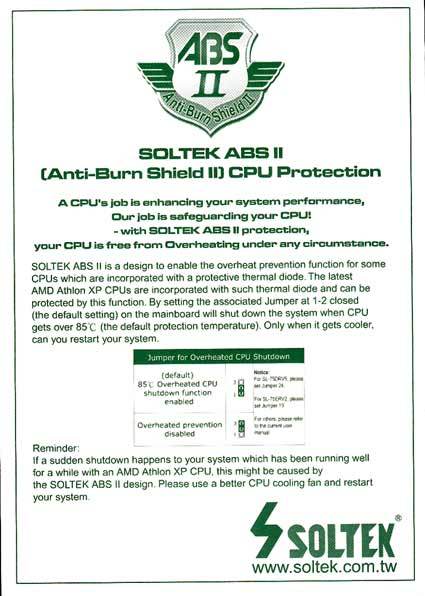VIA KT333 Put To The Test: 18 Motherboards Compared
Booting Via USB: The State Of The Technology
With the continuing spread of USB devices, such as CD burners, printers, scanners, keyboards and mice, the ability to boot from such a device begins to play an important role. Eventually, serial port devices (PS/2) will no longer be used. So a new criterion here is the BIOS support of USB keyboards.
An Exercise In Patience: The Boot Process
A new criterion is the time it takes from boot until the system starts. A few of the candidates took at least 17 seconds (FIC AN17), while the fastest of the bunch took less than 2 seconds for startup (Gigabyte GA-7VRXP).
The AMD Thermal Protection Deficiency: THG Sets The Trend
Outmoded technology: measuring the CPU die temperature underneath the processor. A better method: evaluating the signal of the thermal diode.
Protection from thermal death, provided by Soltek.
Less than half a year ago, Tom's Hardware Guide pointed out the lack of thermal protection with the video clip Hot Spot: How Modern Processors Cope With Heat Emergencies and only now are there the first signs of improvement. Following the video, AMD got down to the problem of thermal protection and came up with a simple switch mechanism. This IC logic is to be integrated on all motherboards starting June 10, 2002 - as long as the individual motherboard manufacturers want to get direct support from AMD, that is. Otherwise, AMD is giving no guarantees for overclocked CPUs that have died a thermal death. Among the latest test candidates, there are two motherboards that are equipped with overload protection (for Palomino and Thoroughbred cores). We were pleasantly surprised by Soltek and Asus boards, both of which switched off immediately when the CPU cooler was removed during operation.
Get Tom's Hardware's best news and in-depth reviews, straight to your inbox.
Current page: Booting Via USB: The State Of The Technology
Prev Page GeForce 4 Compatibility: Not Unimportant Next Page Features Table
